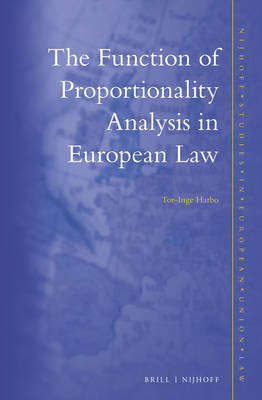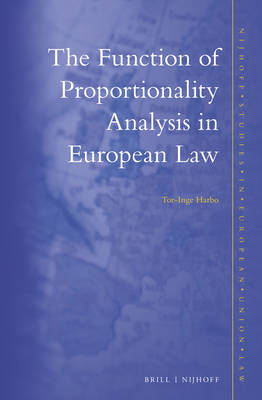
- Afhalen na 1 uur in een winkel met voorraad
- Gratis thuislevering in België vanaf € 30
- Ruim aanbod met 7 miljoen producten
- Afhalen na 1 uur in een winkel met voorraad
- Gratis thuislevering in België vanaf € 30
- Ruim aanbod met 7 miljoen producten
Zoeken
Omschrijving
The proportionality principle has become ever more important in European law and elsewhere. The career of the principle has attracted considerable attention from legal practitioners, legal theorists and political scientists alike, but the debate so far has been quite fragmented. In this new book the author offers a broad and systematic analysis of the proportionality principle. Discussing and comparing proportionality analysis as applied by European courts in part one of the book, the author proceeds to contrast proportionality analysis with alternative assessment schemes. In the third part of the book the author reaches beyond doctrinal reconstructions as he deciphers the functions of proportionality jurisprudence. In view of the various facets of proportionality analysis the author departs from the asserted infringement of a legally protected position by some regulatory act, proceeds to discuss the legitimacy of this intervention and undertakes an analysis of its suitability, appropriateness and necessity. According to the author, the safe grounds of proportionality means-ends rationality do not suffice where the legitimacy of an infringement has to be assessed, where conflicting values have to be "balanced" or where courts engage in a proportionality analysis "stricto sensu". In the concluding remarks, the author proposes how proportionality analysis may be structured in order to better secure the legitimacy of the analysis.
Specificaties
Betrokkenen
- Auteur(s):
- Uitgeverij:
Inhoud
- Aantal bladzijden:
- 350
- Taal:
- Engels
- Reeks:
- Reeksnummer:
- nr. 8
Eigenschappen
- Productcode (EAN):
- 9789004277885
- Verschijningsdatum:
- 27/03/2015
- Uitvoering:
- Hardcover
- Formaat:
- Genaaid
- Afmetingen:
- 160 mm x 239 mm
- Gewicht:
- 657 g

Alleen bij Standaard Boekhandel
+ 604 punten op je klantenkaart van Standaard Boekhandel
Beoordelingen
We publiceren alleen reviews die voldoen aan de voorwaarden voor reviews. Bekijk onze voorwaarden voor reviews.








